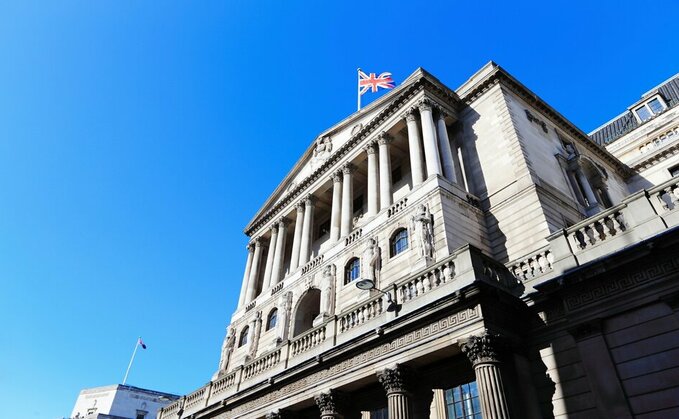
Could we be entering the zone of a global monetary policy mistake? Recent hawkish stances taken by some major developed market central banks make this a valid question. There is now a meaningful risk that these central banks could overtighten in their quest to quell inflation and help push the global economy into recession as well as induce a financial market recession. China's central bank, on the other hand, may be making a different type of policy error by not easing policy enough to support the country's economy.
European Central Bank (ECB)
The ECB provided what is probably the most obvious recent example of an extremely hawkish position from a major central bank. At its June meeting, the ECB raised rates by 25 basis points (bp) and President Christine Lagarde said to expect another hike in July. Most significantly, it surprised the markets by raising its 2025 inflation forecast—consensus expectations had been for a decrease in the inflation outlook, so the increase sent a strong hawkish signal.
As a result of this revised forecast for higher inflation, we think the ECB could even hike again at its next meeting in September. However, like most central banks, the ECB does not have a strong track record for accurately predicting inflation, so there's a distinct possibility that inflation will be lower than forecast—resulting in overtightening of monetary policy.
Federal Reserve Bank (Fed)
Although the Fed kept rates steady at its June policy meeting following 10 consecutive increases totaling 500 bp, the Summary of Economic Projections (SEP) showed that policymakers expect to raise rates twice more in 2023. Fed Chair Jerome Powell underscored the Fed's seemingly muscular approach to taming inflation by declaring that rate cuts are unlikely for a couple of years. This may have been part of an effort to convince markets not to price in cuts this year, and it worked—futures contracts post‑Fed meeting showed rate decreases starting in early 2024. However, Powell's comment about not expecting cuts until 2025 was at odds with the SEP's projections, which showed 100 bp of easing in 2024.
The Fed indicated that it will take into account the cumulative effects of policy tightening when determining how much more to raise rates, signalling that it is likely to take more time between hikes. But will that prove adequate to forestall a recession? The stickiness of core U.S. inflation and the Fed's focus on returning inflation to its 2% target could easily lead the Fed to move rates too high and be slow to cut when the economy enters recession.
This post was funded by T. Rowe Price
Important Information
For professional clients only. Not for further distribution.
This material is being furnished for general informational purposes only. The material does not constitute or undertake to give advice of any nature, including fiduciary investment advice, and prospective investors are recommended to seek independent legal, financial and tax advice before making any investment decision. T. Rowe Price group of companies including T. Rowe Price Associates, Inc. and/or its affiliates receive revenue from T. Rowe Price investment products and services. Past performance is not a reliable indicator of future performance. The value of an investment and any income from it can go down as well as up. Investors may get back less than the amount invested.
The material does not constitute a distribution, an offer, an invitation, a personal or general recommendation or solicitation to sell or buy any securities in any jurisdiction or to conduct any particular investment activity. The material has not been reviewed by any regulatory authority in any jurisdiction.
Information and opinions presented have been obtained or derived from sources believed to be reliable and current; however, we cannot guarantee the sources' accuracy or completeness. There is no guarantee that any forecasts made will come to pass. The views contained herein are as of the date noted on the material and are subject to change without notice; these views may differ from those of other T. Rowe Price group companies and/or associates. Under no circumstances should the material, in whole or in part, be copied or redistributed without consent from T. Rowe Price.
The material is not intended for use by persons in jurisdictions which prohibit or restrict the distribution of the material and in certain countries the material is provided upon specific request.
It is not intended for distribution to retail investors in any jurisdiction.
This material is issued and approved by T. Rowe Price International Ltd, 60 Queen Victoria Street, London, EC4N 4TZ which is authorised and regulated by the UK Financial Conduct Authority. For Professional Clients only.
© 2023 T. Rowe Price. All rights reserved. T. ROWE PRICE, INVEST WITH CONFIDENCE, and the bighorn sheep design are, collectively and/or apart, trademarks or registered trademarks of T. Rowe Price Group, Inc.














